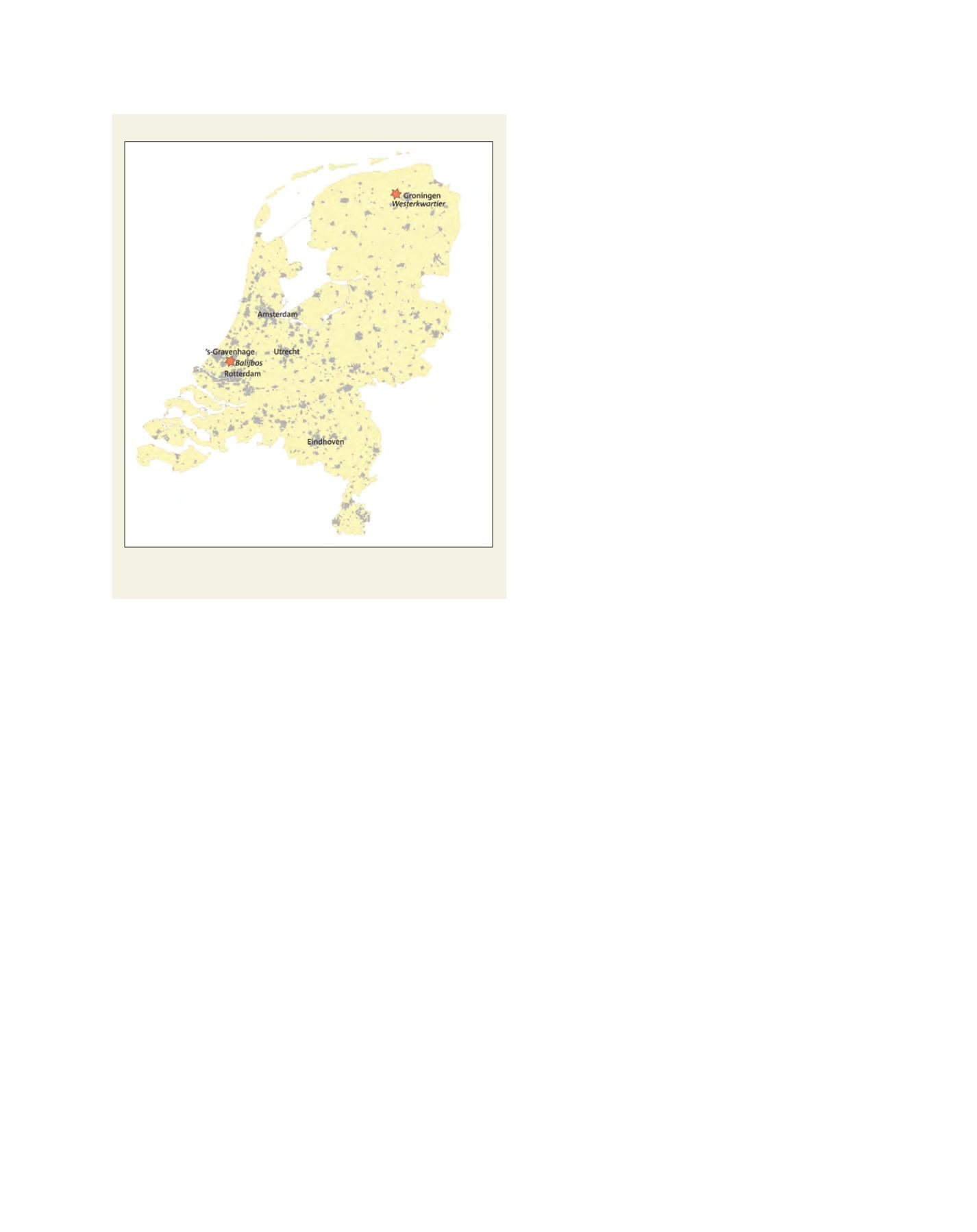

[
] 303
initiative in the Netherlands was implemented here.
Following a request from a group of residents, a wood-
land recreation area for young people was created in
the existing forest, with cooperation from the National
Forest Service and Zoetermeer Council.
A woodland play area is not just a wood; it is a
real adventure playground. Nature is enhanced with
features that encourage play but are still in keeping with
the landscape and surroundings. Children can scram-
ble around on artificial castles, or build huts. They can
cross water using rope bridges and there is plenty of
scope to run around and mess about. The most striking
thing is that although the Balij play area has a lot of visi-
tors, you can still see rare species there, such as hart’s
tongue ferns and kingfishers.
Because it was so heavily used, the children’s wood was
extended and officially reopened in 2011. The Council
encourages children to play there with its Natuursprong
(nature leap) programme. This involves a lot of children
who would never normally find themselves in the woods,
if at all. For the Council, this in an opportunity to flesh
out local policy. A council worker explains:
“Last year the National Forest Service set us off on the
trail of Natuursprong. I think it’s a unique, fun project.
Zoetermeer Council already has a woodland play area
in place that can accommodate the project nicely. We
want to see broad child development, so we want to
continue with Natuursprong. The nice thing about it is
that you can approach it from so many different policy
angles, such as youth work, nature and environmental
education, or sport and recreation.”
Since 2008 the Balijbos has been much improved.
Residents and users are closely involved and have
turned into active campaigners. They play an emphatic
role in discussions about the future of the forest.
Activities are organized by an active group of manage-
ment volunteers and local people, as well as the Forest
Service. In the autumn, local residents were looking
for a place in the forest to celebrate Halloween, and
the children’s woodland was the perfect meeting point.
Another fun option for secondary school children is a
placement in a voluntary organization. This involves
accompanying less able people on nature walks, acting
as personal assistants and nature guides.
In recent years there has been increasing scope to
experiment with the different roles of citizens. There are
examples of members of the public taking considerable
responsibility for nature and landscape in their surround-
ings, with the National Forest Service in a facilitating role.
For example, there is a group of riders who maintain a
new bridleway themselves. Thus local involvement has
produced an initiative of general interest, enabling rare
species in their natural habitats to coexist happily with
people making use of woodland and nature reserves.
Westerkwartier
One area where residents and the National Forest Service
have long worked well together is theWesterkwartier near
Groningen. This is in the north of the Netherlands, one of
(as described in his book,
Frames of Mind
), with the forms of nature
education offered taking account of varying levels of ability and
different qualities. The current products were developed in coop-
eration with new partners, such as youth work organizations, and
connect with networks in other fields, such as sports and games. A
love of nature is also reflected in the programme. The reasons for
giving an extra boost to the target group of young people are that:
• Spending time in nature contributes to child development and
helps build self-confidence
• Inviting children and young people to experience nature ensures
that they will appreciate nature in future
• Many children have little green space in their surroundings but
need the natural environment to stimulate free expression and a
sense of adventure.
Balijbos
The National Forest Service decided to create woodlands for
unstructured play as close as possible to residential districts, to give
children space to range and discover nature. There are now over
twenty such woodlands in the Netherlands, with the Forest Service
as the major provider. These areas are designed by and for children,
who take a major role in their realization – for example, by choos-
ing the theme, considering how to develop the plans and playing a
central role as first users at the opening.
The Balijbos nature reserve in Zoetermeer skirts towns in the
densely-populated western Netherlands. The municipalities of
Zoetermeer, Ypenburg, Delft and Pijnacker, which border the
Balijbos, are inhabited by some 300,000 people. The first citizens’
National Forest Service management
The National Forest Service manages 260,000 hectares of forest land
in the Netherlands
Source: National Forest Service 2011
















